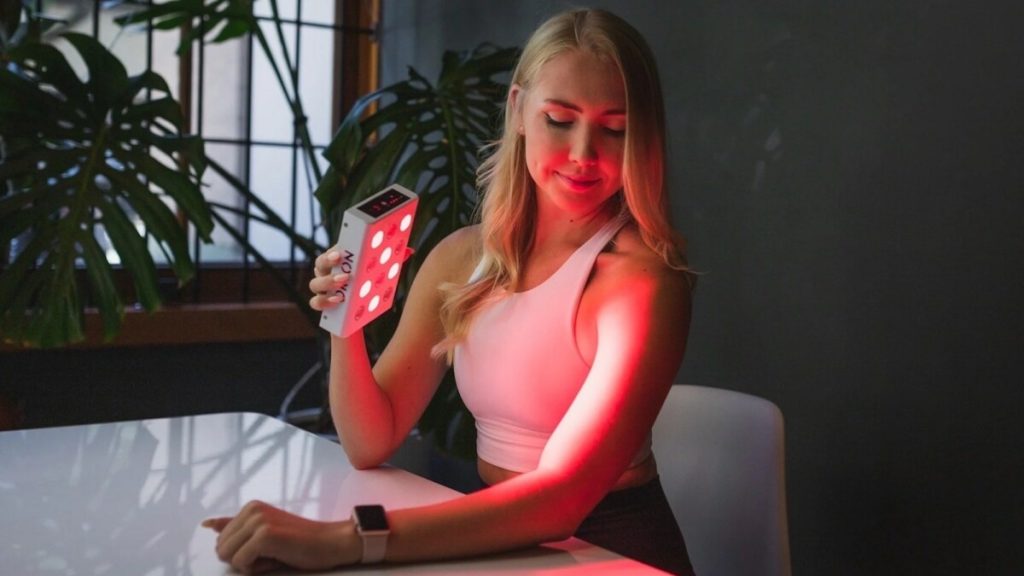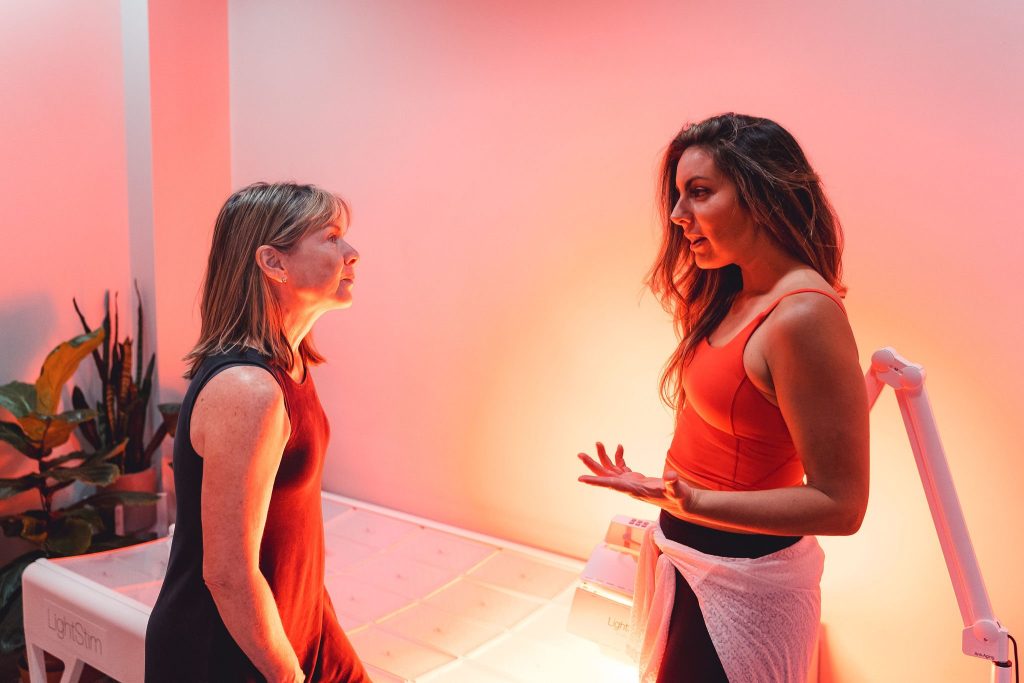Red light therapy is now available to everyone who cares about their skin and improvements for the full body. Earlier, you could have only gotten it at the doctor’s office, but now there are many devices you can use at home and get the potential benefits.
This type of photobiomodulation therapy is becoming more popular because it’s noninvasive and might help with various skin disorders like acne scars. It may work on practically all skin types and tones. But what is red light therapy?
Let’s get started and discover more!

Source: thegadgetflow.com
What Is Red Light Therapy?
Red light therapy (RLT) is a controversial treatment that uses low-level wavelengths of red light that might treat skin problems like wrinkles, scars, and wounds that won’t heal.
Scientists used RLT in the early 1990s to help grow plants in space. They found that the bright light from red light-emitting diodes possibly helped plant cells grow and make food through photosynthesis.
Then, the red light was looked at for its possible use in medicine, specifically to see if RLT might give human cells more energy.
Researchers hoped that RLT might be an effective way to treat the loss of muscle mass, slow healing of wounds, and problems with bone density that come with weightlessness in space.
Moreover, you might also hear the following names for red light therapy:
- Laser light therapy at a low level
- Laser therapy with low power
- The use of a soft laser
- Use of a cold laser
- Photonic stimulation and biostimulation
- Photobiomodulation and phototherapy
How does it work?
It is thought that red light works by causing a biochemical change in cells that makes the mitochondria stronger. The cell’s energy is made in the mitochondria, which act like the cell’s power plant. ATP is the name of the molecule that gives all living things their energy (adenosine triphosphate).
A cell can make more ATP by making the mitochondria work better with RLT. When cells have more energy, they can work better, renew themselves, and might fix the damage.
RLT differs from laser and intense pulsed light (IPL) therapies because it doesn’t damage the skin’s surface. Laser and pulsed light therapies work by causing controlled damage to the skin’s top layer, which might trigger the body’s natural healing process.
RLT skips this hard step by causing the skin to possibly grow new cells. RLT sends out light about 5 millimeters below the skin’s surface.

Source: barrewest.com
How Did People Become Interested in Red Light Therapy?
NASA first tried out red light therapy to help plants grow in space. Later, they used it to help astronauts heal from cuts and scrapes. As with most new things, people started to think of other ways they could be used.
In reality, red light treatment is already widely utilized in photodynamic therapy, a medical field. This treatment uses low-power red laser light to turn on a drug that makes cells more sensitive to light.
The two things coming together cause a chemical reaction that kills cells. It might be used to treat skin problems like skin cancer, psoriasis, acne, warts, and some types of cancer.
Moreover, RLT is being looked into (or is already being used) to possibly treat many different health problems. How well the treatment works for its goals is unclear and debatable.
Effectiveness
Most experts say they don’t know yet if RLT works for everything it is said to do. Most people agree that the studies done so far show some promise for some conditions but that more research needs to be done.
Red light therapy is a new treatment that is getting more and more attention. However, there isn’t enough evidence to support most of the current uses.
A randomized, placebo-controlled trial is the best study to determine if a product works. This implies that a specified number of participants with the same characteristics get either the study therapy or a placebo for the same condition.
Some studies also compare the treatment to another one that is often used. Then, the results can be compared between the new and a “current standard” treatment or a group that didn’t get any treatment.
Many of the published RLT studies only used a small number of people, didn’t have a placebo group, were done on animals instead of humans, or only looked at cell tissue. Most researchers say the results look good, but they need more high-quality studies with larger groups of people.
Safety
Red light therapy seems safe and has no known side effects, at least when used as directed and for a short time. This therapy doesn’t hurt and isn’t as harsh as some treatments you put on your skin.
However, if you use a product wrong, like too often or not as directed, it could hurt your skin or eyes if they aren’t covered. We don’t know yet if red light therapy devices are safe in the long run.
The safest thing to do is to see a dermatologist or a qualified, trained cosmetic therapist. A dermatologist can ensure that your skin problem is what you think it is and talks to you about red light therapy and other possible treatments.
Read more: Does Red Light Therapy Kill Fungus?
Conclusion
So, what is red light therapy? Since you know what red light therapy is, we can sum up the above. People are talking about using red light therapy as a way to treat some common skin problems.
It is still a new therapy, but there is a lot of hope for it. If you’re considering RLT therapy, you should consult your doctor or dermatologist first. Then, you and your doctor will discuss treatment options that will get you the desired results. Red light therapy may or may not be an option.
Don’t be afraid to ask your doctor about your treatment options, including if you’re interested in a certain therapy and if it’s safe and effective for your skin condition.

Hello! I’m Nicky Rodgers.
Almost a decade ago, I got excited about the idea of employing alternative methods like red light therapy to create a healthier life.
To learn more about it, I did my Certified Light Therapist course from Photonic Therapy Institute and started looking into the intricacies of how light therapy influences several bodily processes. Before I knew it, my interest had become an obsession which resulted in this extensive blog.
Here, I offer countless well-researched articles to help you understand the benefits and uses of light therapy. I hope this information gives you a head start in your wellness journey.
